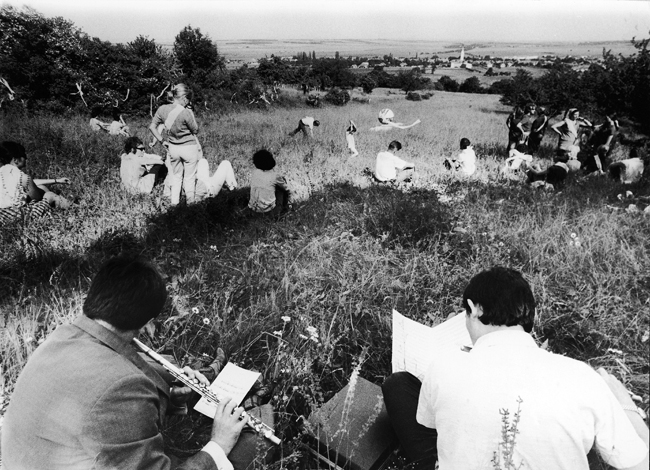Jana Želibská: Betrothal of Spring

An important figure in contemporary Czech and Slovak Art, Jana Želibská has been creating art since the mid-1960s. Working in printmaking, drawing, painting, assembelage, installation, video and performance, Želibská is a significant representative of action art in Central Europe. Her primary themes are the exploration of female identity, the connection of feminity to nature, and humanity’s relationship to earth, including references to ecology. In 2012, a major retrospective of Želibská’s work was held at the Slovak National Gallery, Bratislava.
While many female Central European artists working in the latter half of the twentieth century were creating self-reflective or autobiographical work, Želibská was investigating questions around sexuality and gender identity, the historical representation of the female nude, and the connections between the feminine and the natural environment. Growing up in an artistic family (both of her parents were respected painters), Želibská began to actively participate in the Prague and Bratislava art scenes in the mid-1960s. Creating objects that included items from everyday living, floral ornaments and unstable materials, she was one of a handful of Czechoslovak artists who helped to expand notions of what art was.
In the early 1970s Želibská began to situate her studio and “gallery” outdoors. Working in ways that left no permanent mark on the natural environment, she connected her activities to the wider, international land-art movement.(Želibská traveled, in the late 1960s, to Paris, Indonesia and Cambodia, which gave her an understanding of the contemporary art scene in the West and the distinct iconography and themes that were a part of contemporary and historical East Asian art. The knowledge that she gained during these travels influenced her work in various ways, including the application of different mediums and the use of various symbols.) The extension of her work and exhibition space to the countryside were part of the natural evolution of her creative practice as well as a response to the harsh political climate in her home country during what was known as the period of normalization (from the early 1970s on).(The period of normalization, which lasted throughout the 1970s, was a crackdown by the Czechoslovak Socialist government in response to the events of 1968, including the relative openness and freedom of The Prague Spring followed by the Soviet led invasion of Czechoslovakia by the Warsaw Pact countries. This period is considered to be the most harsh and oppressive time in the history of communist Czechoslovakia.) Her work from this period includes enigmatic conceptual pieces that were documented through photography and activities or “performances” organized for small groups of friends and collective actions, such as Betrothal of Spring, a happening that Želibská produced near a forest in the small village of Dolné Orešany in 1970. Attended by artists, friends and other invited guests, the event merged what Želibská saw as the erotic meeting of spring and summer with the performance of rituals stemming from Czech and Slovak folklore connected to nature. Young woman and girls in white dresses with flowers in their hair mingled among the audience members, while ribbons with myrtle, mirroring a custom that is part of the Slovak wedding ceremony, were handed out to the guests. In the middle of a large field, Slovak neo-avante garde artist and composer Milan Adam?iak and other friends played music by Débussy and Vivaldi. A large textile piece with a red and blue circle in the center, created by the artist Miloš Urbásek, marked the orientation for an airplane to release ribbons, which the participants below tied to trees and to themselves. As the piece progressed, curious villagers from Dolné Orešany wandered onto the site and thus into the piece itself, creating a varied audience outside of the typical art crowd. With Betrothal of Spring and other conceptual action pieces from this time, including Silkworm and Maritime Greeting, Želibská emphasized the importance of play and collaboration as a part of her process, while negating the role of the institution as well as the official, Socialist art scene for the production and presentation of her work While she was not allowed to exhibit in certain museums and galleries as a result of these activities, Želibská produced original work that synthesized ideas from land art, feminism, non-Western motifs and folklore.
To view images as a slide show, please click on first image.
{gallery}eco_issue/images/zelibska{/gallery}
{loadposition ecoissue}




